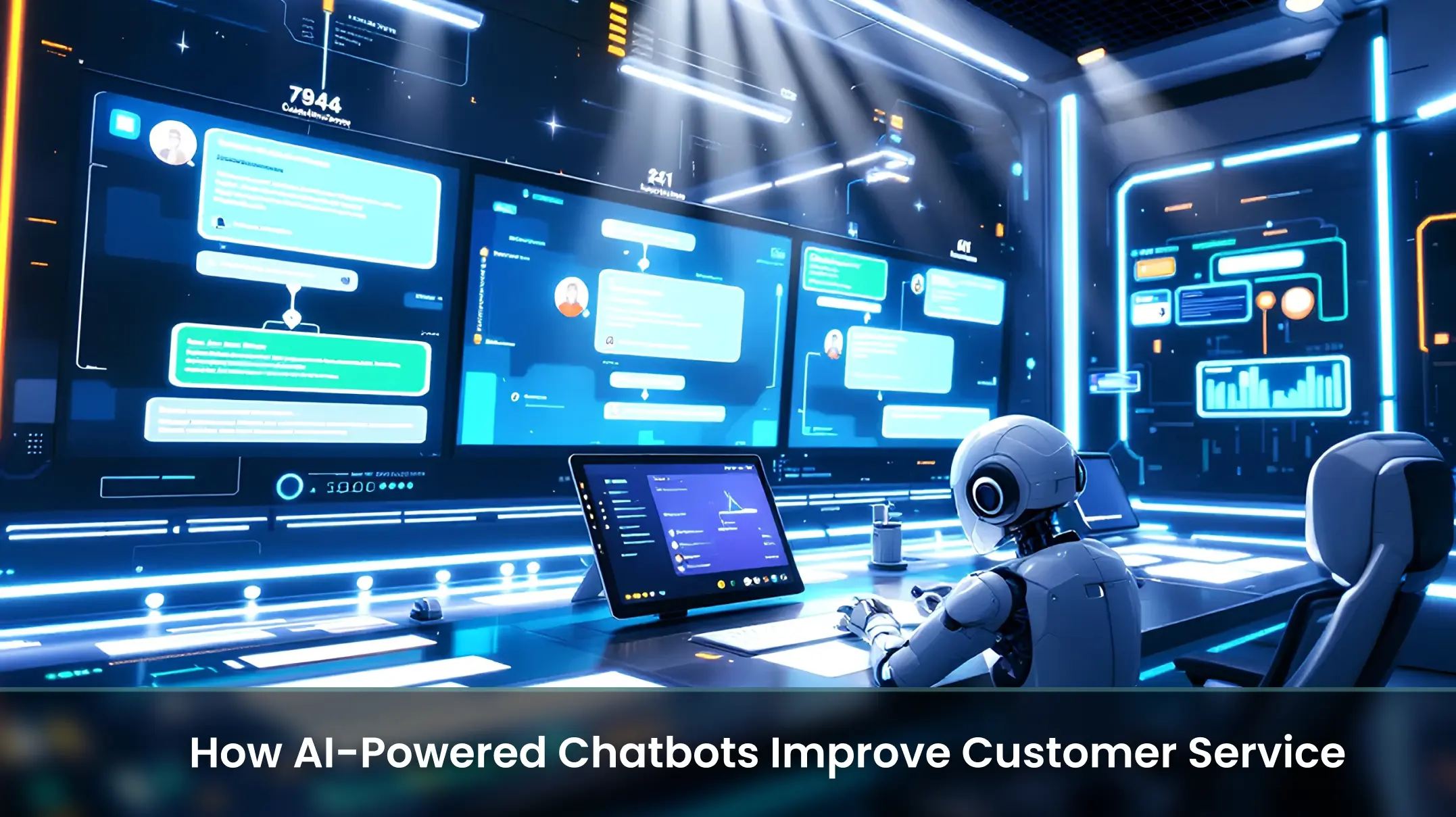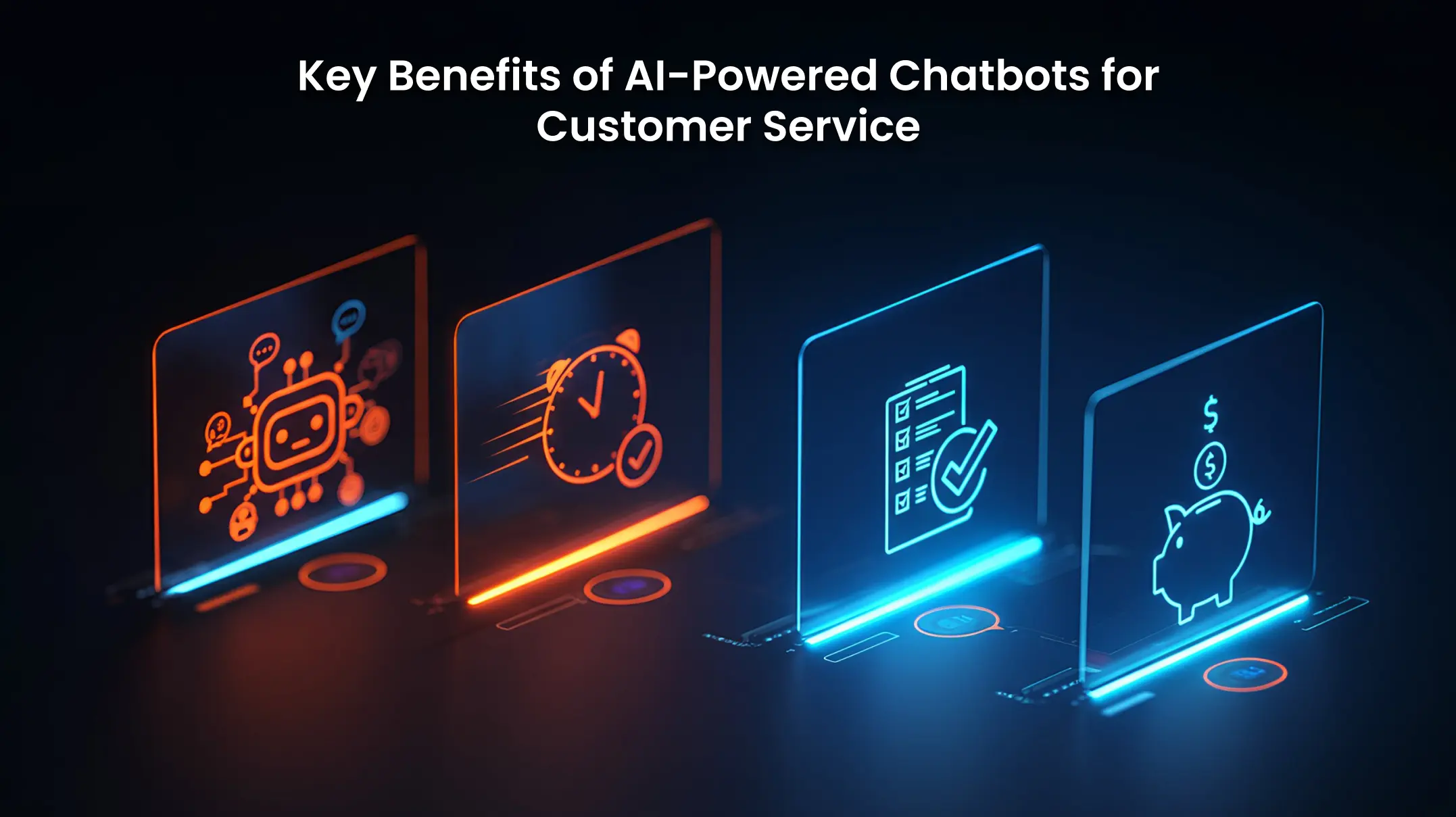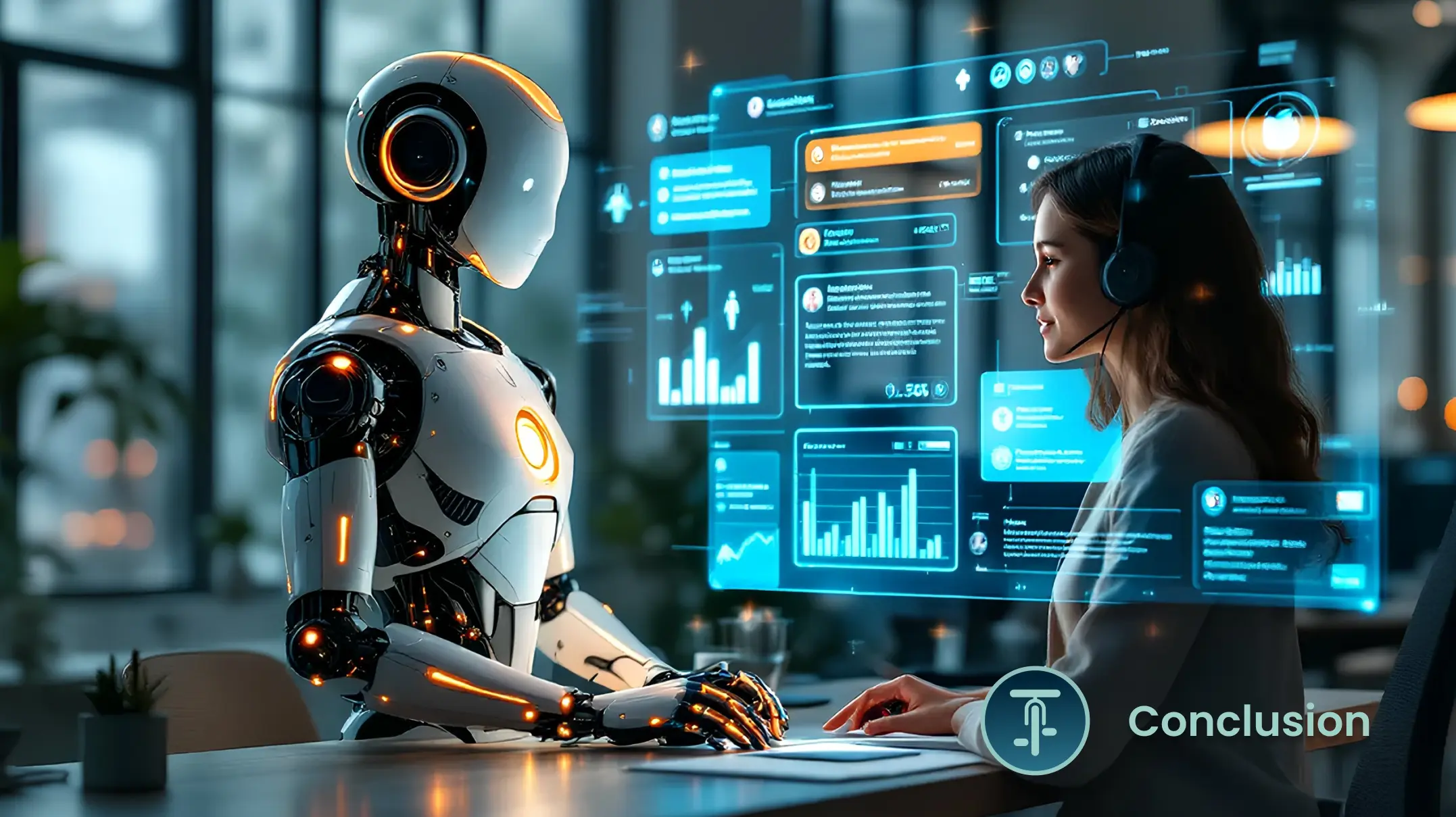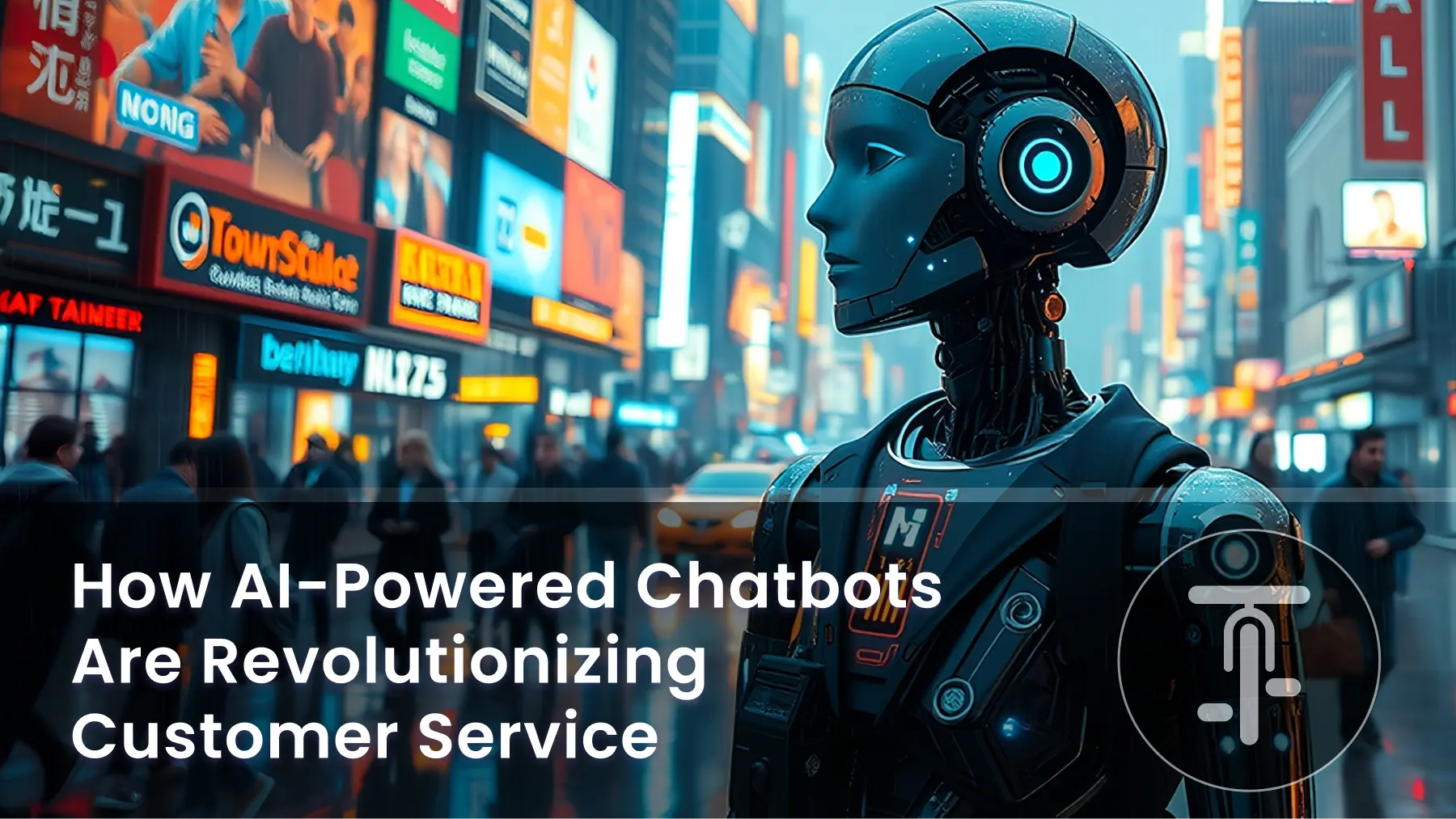Introduction
Customer service is changing at an unprecedented rate these days. Businesses are increasingly relying on AI-powered chatbots to manage customer interactions efficiently and effectively. This blog post delves into the revolutionary impacts of AI chatbots on customer support and ways they can improve business outcomes. Regardless of whether you’re a small, medium-sized enterprise or a multinational company, knowing these trends is crucial for remaining competitive and maximizing customer satisfaction.
In a situation where a customer has a pressing question during late-night hours. The traditional support hubs might not be open, but with AI-facilitated chatbots, on-the-spot and correct answers are just a click away. As it turns out, studies indicate that more than 67% of customers have employed a chatbot to make rapid communication with a company, making it one of the most rapidly expanding tools across customer care.
This rapid increase in the use of chatbots is spurred by a synergy between technological developments and customer demands for immediate, tailored, and hassle-free interaction. Consequently, companies that embrace AI-based solutions within their customer care strategies not only fulfill such lofty expectations but also gain quantifiable advantages in efficiency, cost savings, and customer loyalty.
The Emergence of AI-Driven Chatbots in Customer Care
A Shift Towards Automation
One of the biggest changes in customer service is the transition to automation. Chatbots using AI enable companies to:
- Process high-volume questions: Answer a vast number of customer inquiries at once.
- Cut operational expenses: Reduce the necessity for an extensive support staff.
- Provide 24/7 support: Support customers at any hour of the day.
For instance, one of the leading e-commerce websites deployed a chatbot system that lowered the average response time by 70% and lowered the cost of customer service by almost 30% in the first year.
Technological Advances Driving Chatbot Success
The quick advances in natural language processing (NLP) and machine learning have enabled chatbots to get better at understanding and responding to human language more contextually and conversationally. Some of the primary technological advancements behind this revolution are:
- Advanced NLP Capabilities: Current chatbots employ advanced NLP algorithms to understand slang, context, and even emotions.
- Machine Learning Integration: Continuous learning helps chatbots get better with time as they learn to process more interactions.
- Voice Recognition: Most chatbots today support voice interfaces, enabling them to be used on smart speakers and mobile phones.
Integration with CRM Systems: Chatbots are now deeply integrated with customer relationship management (CRM) systems, enabling highly personalized interactions based on the history of previous customers.
How AI-Powered Chatbots Improve Customer Service

Efficiency and Scalability
Efficiency is enhanced by AI chatbots through automating routine tasks and routine inquiries. The following are the advantages:
- Instant Response: Chatbots give instant feedback to customer inquiries, such that no question remains unanswered.
- Reduced Wait Times: Filtering out simple questions leaves human representatives to attend to difficult ones, minimizing total customer wait times.
- Scalability: Chatbots support an infinite number of customer interactions at once, supporting business growth without a corresponding increase in cost.
Personalization and Customer Satisfaction
Today’s customers demand personalized experiences. AI chatbots cater to those demands by:
- Utilizing Data: Chatbots draw upon previous interactions and purchase histories to personalize conversations and present context-aware suggestions.
- Sentiment Analysis: By sensing customer emotions, chatbots can modify tone and response, leaving customers feeling heard and appreciated.
- Proactive Engagement: Certain chatbots are programmed to start conversations, make offers, or solicit feedback, transforming an inactive customer experience into an interactive one.
Cost Reduction and ROI
Investing in an AI-powered chatbot system can lead to significant cost savings:
- Lower Labor Costs: Automated responses decrease the necessity for a huge support staff.
- Minimized Error Rates: Uniform and precise responses minimize errors, enhancing brand reputation.
- Increased ROI: With improved query resolution and greater customer satisfaction, businesses can enjoy a significant return on investment through customer loyalty and retention.
Real-World Examples of Chatbot Success
Case Study 1: Domino’s Pizza “Dom”
Background:
In the fast-paced food industry, providing quick and easy access to ordering services is key to customer satisfaction. Domino’s Pizza has capitalized on this by introducing its AI-driven chatbot, known as “Dom,” which streamlines the pizza ordering process across multiple digital platforms.
Solution:
- Order Placement & Tracking: The chatbot facilitates order placement directly from messaging apps and the Domino’s website. It can verify orders, suggest customizations, and track the pizza’s progress in real time.
- Seamless Integration: By integrating with internal ordering systems, the chatbot ensures that every customer receives up-to-date information about order status, estimated delivery times, and any promotions available.
- Conversational Engagement: Dom’s design incorporates natural language capabilities that allow it to engage with customers in a friendly, conversational manner, making the ordering experience more intuitive.
Results:
Streamlined Service: Domino’s has reported a notable boost in order volume via digital channels, thanks to the convenience and speed offered by the chatbot.
Customer Retention: Enhanced customer interactions and streamlined service have translated into higher retention rates, with many customers preferring the ease of digital orders over traditional phone calls.
Operational Impact: The chatbot’s ability to handle frequent ordering questions has freed up human staff to focus on in-store operations and more complex customer requests.
Case Study 2: Sephora’s Virtual Artist
Background:
Sephora, a global beauty retailer, recognized the growing consumer demand for personalized shopping experiences. To bridge the gap between online and offline purchasing, Sephora developed an AI chatbot known as the “Virtual Artist.”
Solution:
- Interactive Beauty Consultations: The chatbot engages shoppers by offering makeup tips, product recommendations, and even a feature that allows users to virtually try on makeup using augmented reality.
- Personalization: By analyzing customer preferences and previous purchases, the chatbot delivers tailored advice that enhances the overall shopping experience.
- Omnichannel Engagement: Accessible via Sephora’s website, mobile app, and social media platforms, the Virtual Artist ensures consistency and convenience for customers regardless of where they interact with the brand.
Results:
- Increased Conversion Rates: Customers who interacted with the chatbot were more likely to purchase due to the personalized recommendations and interactive features.
- Enhanced Customer Satisfaction: User engagement soared as customers appreciated the detailed, personalized guidance, which led to positive reviews and higher brand loyalty.
- Innovation Recognition: Sephora’s innovative use of AI has set a benchmark in the retail industry, demonstrating how technology can blend creativity with service excellence.
Key Benefits of AI-Powered Chatbots for Customer Service

Following is a rundown of the key advantages of businesses in having AI-driven chatbots as a part of their customer service management:
1. Improved Customer Interaction
- Personalized Interactions: Employ customer data to personalize answers.
- Proactive Support: Prevent customer needs using smart algorithms.
2. Efficient Operations
- Automated Processes: Manage repetitive inquiries without a human touch.
- Scalable Solutions: Support an increasing number of customers with a consistent response.
3. Better Accuracy and Consistency
- Error Reduction: Avoid human error using standardized responses.
- Data-Driven Responses: Drive continuous improvement using analytics.
4. Cost Savings and ROI
- Lower Labor Costs: Minimize the requirement for large human support teams.
- Higher Conversion Rates: Enhance customer engagement and retention with quicker response times.
Integrating AI-Powered Chatbots: Best Practices
When integrating AI-powered chatbots into your customer service strategy, use the following best practices:
- Hybrid Approach: Have chatbots perform routine tasks while complex issues are escalated to human agents.
- Clear Transition Protocols: Establish protocols for when a conversation needs to be handed over to a human representative.
- Data Security and Privacy Compliance: Comply with regulations like GDPR and CCPA.
- Secure Data Handling: Employ encrypted communications and securely store data to avoid breaches.
- Continuous Learning: Periodically update the chatbot’s algorithms and training data.
- User Feedback: Install systems for gathering customer feedback to enhance performance over time.
- Performance Metrics: Monitor key performance indicators (KPIs) such as average response time, customer satisfaction score, and conversion rates.
- Actionable Insights: Utilize analytics software to derive trends and potential improvements.
The Future of Customer Service with Chatbots

In the future, with advancements in AI technology, the future of customer service holds great promise. Chatbots are not a trend that will end soon, but the beginning of an evolution in customer interaction for businesses. Some forecasted developments are:
- Predictive Analytics: Utilizing AI to anticipate customer requirements and provide solutions in advance.
Emotionally Intelligent - Chatbots: Creating systems that better identify and respond to human emotions.
- Multilingual Support: Extending chatbot functionality to support various languages, transcending geographical boundaries.
- Improved Integration: Smooth integration with Internet of Things (IoT) devices, allowing even more customized customer experiences.
These advancements will allow companies to further customize and streamline their customer service, making the experience more responsive and enjoyable for users.
Challenges and Considerations
Although the advantages of AI chatbots are evident, companies also need to take into account possible challenges:
- Complexity of Queries: Certain problems might need sophisticated human judgment that is beyond the chatbot’s ability.
- Integration Issues: Integrating new AI systems with existing software systems can prove difficult.
- Customer Skepticism: Some customers may initially be hesitant to interact with an AI rather than a human representative.
To overcome these challenges, companies should invest in robust chatbot training, maintain a clear escalation pathway to human agents, and continuously refine their strategies based on user feedback and analytics.
Conclusion

AI chatbots are transforming customer service through increased efficiency, personalization, and lower operational costs. With their round-the-clock capabilities, along with learning and data-driven analysis, they are a goldmine for businesses to capitalize on. At Pedals Up, we realize the revolutionary potential of AI in customer service, and we are committed to assisting you in leveraging this technology to fuel growth and satisfaction.
By embracing a hybrid solution that combines the strengths of AI and human interaction, companies can guarantee that each customer touchpoint is both efficient and intimately personal. Whether you want to automate support operations or deliver an authentic, one-to-one customer experience, AI-driven chatbots are a future-proof solution that will keep you ahead of the curve in a competitive marketplace.
Need to revolutionize your customer service using AI-powered chatbots? Schedule a consultation with our experts at Pedals Up or subscribe to our newsletter for the latest industry trends and digital transformation insights.




